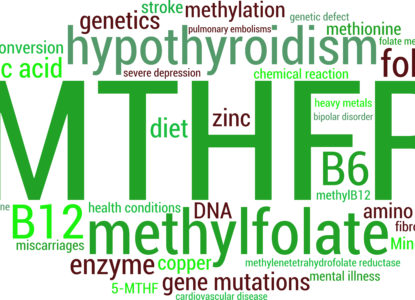A Dietitian’s Perspective on Low FODMAP Diets
Article at a Glance
- FODMAPs is an acronym for Fermentable oligo-, di-, mono-saccharides and polyols which are a group of carbohydrates that are poorly absorbed.
- Low FODMAP diets can be beneficial for improving symptoms related to multiple digestive issues, including IBS.
- Studies related to Irritable Bowel Syndrome (IBS) have shown that following a low FODMAP diet effectively reduces digestive symptoms.

Contents
If you have experienced digestive issues and have been searching for answers, chances are you have come across the low FODMAP diet. Perhaps you’ve even thought about following this meal plan.
Before we talk about whether or not low FODMAP diets work, you need to understand what “FODMAPs” are and how they operate in our body.
What are FODMAPs?
FODMAPs is an acronym for Fermentable oligo-, di-, mono-saccharides and polyols which are a group of carbohydrates that are poorly absorbed. For some, they become fermented in the small intestine. Some of these FODMAPs travel to the large intestine where it feeds bacteria and causes that bacteria to thrive. This fermentation and travel process can cause very uncomfortable symptoms such as bloating, diarrhea, constipation, abdominal pain and excessive gas.
Within the FODMAPs there are 5 sub-categories which include: lactose, fructose, fructans, galactans and sugar alcohols or polyols. All of which are commonly found in everyday foods. This is how they are broken down:
- Oligosaccharides
- Fructans: fermentable carbohydrates that have a fructose-fructose bond
- Galactans: contain galactose-galactose bonds that are not absorbed
- Disaccharides:
- Lactose: carbohydrate or sugar found in dairy products.
- Monosaccharides:
- Fructose: sugar found in fruits and sweeteners such as honey, agave syrup, and high-fructose corn syrup
- Polyols:
- Sugar Alcohols such as xylitol, sorbitol etc. Polyols can have a laxative effect.
When is a low FODMAP diet recommended?
Low FODMAP diets can be recommended for various digestive concerns such as IBS (irritable bowel syndrome) and SIBO (small intestinal bacterial overgrowth) to help manage symptoms.
Clinicians may also recommend a low FODMAP diet to help reduce digestive symptoms related to IBD (Inflammatory Bowel Disease), Visceral Hypersensitivity ( ex. endometriosis), Non-Celiac Gluten Sensitivity (NCGS) and histamine intolerance in some circumstances.
What is a low FODMAP diet?
Following a low FODMAP diet under the advice of a qualified provider for 4-6 weeks can be helpful in reducing symptoms related to digestive issues.
When following a low FODMAP diet, you will avoid foods that are considered ‘high FODMAP’ and will be able to include low to moderate FODMAP foods. Dependent on symptoms and severity, your provider will customize your diet recommendations. The below foods are an overview of what may be included or eliminated while following a low FODMAP diet for symptom management. On average most individuals start to notice improvement after 2-4 weeks of following a low FODMAP diet, however this can vary between individuals.
Foods to Avoid on a low FODMAP diet:
- Dairy: Buttermilk, evaporated milk, cream, kefir, sour cream, goat milk, all lactose containing products
- Vegetables: brussel sprouts, cauliflower, dandelion greens, garlic, jicama, leeks, mushrooms, okra, onion, shallots, sugar snap peas, sunchokes, corn
- Fruits: apples, apricots, blackberries, cherries, dates, figs, nectarines, peaches, pears, plums, prunes, watermelon
- Grains: wheat, rye, barley
- Nuts/seeds: cashews, pistachios
Foods to Limit on a low FODMAP diet:
- All Legumes
- Dairy: Coconut milk, rice milk
- Vegetables: artichoke hearts, asparagus, beets, broccoli, celery, fermented vegetables, pumpkin, snow peas, butternut squash
- Fruits: dried fruit, pomegranate seeds
- Grains: Amaranth, processed gluten free grains, rolled oats
- Nuts/seeds: almonds, coconut, hazelnuts, tahini, sesame seeds, sunflower seeds
- Fats/oils: Avocado
Foods to Include on a low FODMAP diet:
- All proteins (unless they contain a high FODMAP ingredient)
- Dairy: Almond milk, hemp milk
- Vegetables: All other vegetables not listed to avoid
- Fruits: banana, blueberries, cranberries, grapes, kiwi, melon, papaya, orange, pineapple, raspberries, starruti, strawberries, tangerines
- Grains: Rice, quinoa, popcorn, buckwheat, millet, steel cut oats
- Nuts/seeds: brazil, chia, chestnuts, flaxseed, macadamia, peanuts, pecan, pine nuts, pumpkin seeds
- Fats/oils: Ghee, coconut milk, avocado oil, olive oil, flaxseed oil, olives
Do I have to follow a low FODMAP diet forever for IBS?
The short answer is No. After the elimination phase of the low FODMAP diet (2-6 weeks) you should see stabilized symptoms or improvement if FODMAPs were playing a role in your digestive issues. You will then work with your provider to systematically reintroduce each group of high FODMAP foods and form a plan moving forward.
For some people including digestive enzymes or probiotics can aid in managing symptoms without following a modified low FODMAP diet long term.
Are FODMAP foods unhealthy?
One of the reasons IBS, SIBO, and other GI issues can be frustrating to identify is because healthy foods can be causing the symptoms! Many of the High FODMAP foods you need to avoid are perfectly wholesome foods like whole grains, fruits, and vegetables, but may not be great for you, right now.
Most high FODMAP foods are high in fiber and prebiotics. We need prebiotic foods to encourage optimal gut health. Therefore, not everyone needs to follow this diet.
Does a Low FODMAP diet work for IBS? What does the science say?
Low FODMAP diets can be beneficial for improving symptoms related to multiple digestive issues. However, it is most studied in the use of IBS relief. Research supports the use of a low FODMAP diet for multiple digestive disorders as described below.
Studies related to Irritable Bowel Syndrome (IBS) have shown that following a low FODMAP diet effectively reduces digestive symptoms. High FODMAP foods are osmotically active. This means that they pull water into the small intestine. The water needs to get out- which can contribute to diarrhea and bloating. Therefore, following a low FODMAP diet can help with relief from diarrhea and loose stool.
The dietitian perspective on low FODMAP diets
I was seeing a female in her 30s that was having diarrhea 12+ times per day. All of her testing was normal, no other symptoms or issues. She was under a high amount of stress for a very long time. We tried a low FODMAP diet as a last resort and she found relief from her symptoms almost immediately. It’s possible the stress response coupled with high FODMAP foods was playing a role.
SIBO is often thought of as a complication from another digestive disorder. In individuals with SIBO, the fermentation of FODMAPs make their way to the large intestine and feed bacteria, the bacteria let off methane, and the bacteria that feed on FODMAPs produce hydrogen. These types of gas contribute to bloating and the appearance of a much larger stomach than normal.
A low FODMAP diet aims to correct the imbalance of bacteria in the small intestines, and often improves symptoms of SIBO but may not treat it entirely.
There is proof in research to support that a low FODMAP diet is beneficial in relief from gastrointestinal symptoms in individuals with IBD. This study found that participants had a significant improvement in nausea, diarrhea, bloating, abdominal pain, and fatigue.
Abdominal pain is a common symptom of IBS and IBD. Visceral Hypersensitivity is an intensified or altered pain response. This is thought to be from inflammation and heightened nerve response. Visceral Hypersensitivity is often seen in those with IBS and endometriosis. A low FODMAP diet can be beneficial for these patients because it reduces abdominal distension which can lessen the hypersensitivity response.
Histamine Intolerance is characterized by excessive amounts of histamine in the system. We all have histamine in our bodies to help with digestion and neurotransmitters among other processes. However, excess histamine can be the result of consuming high histamine foods, environmental triggers, stress, or genetic predisposition. This study showed that individuals with histamine intolerance that followed a low FODMAP diet actually decreased their histamine levels by eightfold.
Non-Celiac Gluten Sensitivity has been on the rise recently. It is thought that 1-3% of individuals have NCGS. A review of studies done in smaller sample sizes showed that there was improvement in digestive symptoms in patients placed on a low FODMAP diet in those who self reported gluten sensitivity. Both the low FODMAP diet and a gluten free diet led to a significant improvement of both digestive and psychological symptoms in participants with NCGS. However, in one study, patients who were self reported gluten sensitive saw no problems eating gluten after going on a low FODMAP diet.
Genetics and digestive issues
Our genetics play an important role in our health, nutrition, and digestive systems.
Many digestive disorders have similar symptoms and characteristics. We can use genetic information to clarify results.
HLA is a gene variant that is responsible for how your body tells the difference between your own proteins and proteins that are foreign and possibly harmful. HLA is important in distinguishing food sensitivities, especially to gluten. Almost 95% of people with celiac disease have the expressed gene HLA-DQ2 or HLA-DQ8. 30-40% of the general population carry this allele without developing celiac disease.
Lactose intolerance is one of the most common intolerances. Almost 75% of people lose the ability to digest lactose at one point in time. Lactose also falls under the disaccharide category in FODMAPs. We have a gene called LCT that is integral in making lactase (the enzyme that allows us to digest dairy). LCT gene variations can cause deficiency in lactase which can cause some to become lactose intolerant.
Genetics in the circumstance of clarifying digestive issues related to FODMAPs vis food sensitivities and intolerances can be imperative.
A 64 year old female starting seeing me for nutrition consulting after I provided her with a nutrigenomics analysis and interpretation. Before her nutrigenomics test, she failed at every diet she tried, but after being prescribed a DNA based diet, her compliance and motivation substantially increased to the point where she was finally able to alter her diet and reduce her symptoms. The analysis also led her towards a gluten and dairy free diet as well as a reduction in highly processed (and high sodium) foods.
A low FODMAP diet can be beneficial for those people experiencing digestive symptoms. Depending on which digestive issues are a factor, it may not completely solve your symptoms. Working with a qualified provider that can help you uncover whether you are experiencing digestive issues related to consumption of FODMAPs, gluten intolerance, IBS, IBD, genetics, or another concern is always best.
If you enjoyed this post, be sure to check out my piece on hidden sources of gluten and Leigh Matthew’s excellent summary on foods that cause acne.



